Moose nip the young growth from willow trees in the winter while wolves tear meat from a freshly-killed deer. Neither could eat what they do without the specialized teeth in their mouth.
Each species of mammal has different teeth in terms of size, shape, organization and number. Similarities exist between mammals of certain eating habits, which include carnivores (meat eaters), herbivores (plant eaters), omnivores (meat and plant eaters) and insectivores (insect eaters).
Not all animals have the four main groups of teeth: incisors, canines, premolars and molars (the latter two referred to as cheek teeth). Each group of teeth performs a different function: grasping, killing, chewing, nipping, grinding or crushing.
Incisors are the small, chisel-shaped teeth at the front of the jaw that are used for cutting, scraping and tearing. Incisors are larger in rodents and lagomorphs (rabbits and hares).
The canines, which are prominent on carnivores, are the conical, pointed teeth used to capture and kill prey.
Located at the back of the jaw are the premolars and molars which are primarily used for grinding and shearing.
Herbivores (such as moose and rodents) lack canines because they don’t kill and capture prey. Instead they have very sharp edges on their incisors which make them excellent for cutting vegetation. Since grasses have hard, abrasive silica in the fibers, they are tough on teeth. Herbivores counter this abrasiveness by having cheek teeth with high crowns and hard enamel ridges that last a long time with intense use.
Rodents, such as mice, squirrels, porcupines and beavers, would wear out their incisor teeth with all the gnawing, nipping and biting of plant material they do. However they have continuously growing incisors in both the lower and upper jaws to prevent this. Rodents also have a gap between their incisors and molars where the canines are typically located.
Members of the deer family lack incisors on the upper jaw. Instead the upper jaw has a callous pad where the bottom incisors touch. The lack of upper incisors is the reason why they don’t leave a clean ‘snip’ on vegetation, instead they leave a ragged cut.
Carnivores also have specialized molars called carnassial teeth. Their last upper premolar and first lower molar are jagged and serrated to help shear pieces of flesh off carcasses so that the meat is small enough to swallow.
The carnivore’s canine teeth are typically larger and longer than their other teeth, mainly because they are used to seize prey. However, a walrus’s tusks are large canine teeth and don’t aid in capturing prey. Instead they are used for fighting, cutting breathing holes in the ice and helping the walrus haul itself onto ice.
The carnivorous river otter’s teeth demonstrate how teeth can be specialized for their diet. The otter’s incisors tear off small pieces of flesh, the canines hold slippery fish, the premolars shear through flesh, and the molars crush fish bones.
Then there are the animals that can eat both plants and animals, the omnivores. The teeth of an omnivore aren’t specialized for anything but this allows them to eat everything. A raccoon, which is an omnivore, can eat everything from fish to insects and fruits. Grizzly bears can eat carrion, tubers and huckleberries.
Totally different from other mammals are the insectivores, such as shrews and moles. In order for them to crunch the hard exoskeleton of insects, their cheek teeth are square with sharp cusps and edges. Shrews also have long front teeth that project forward to grasp small insects.
From tiny shrew teeth to an elephant’s elongated incisor teeth (tusks), the shape, size and position of teeth can provide considerable insight into an animal’s diet and lifestyle.

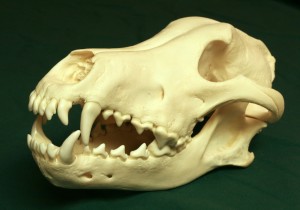
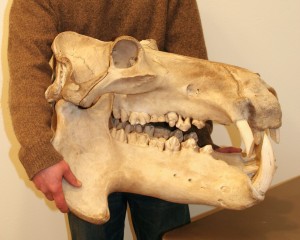
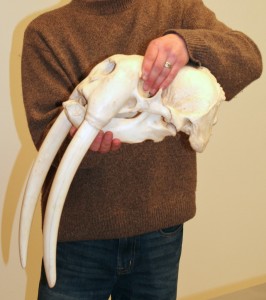
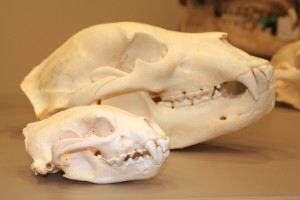
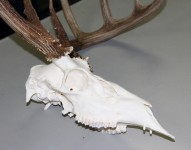
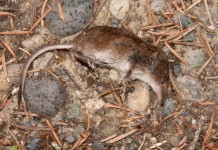
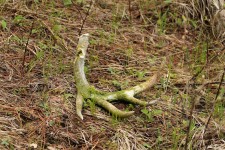
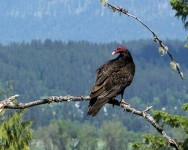
Good column, Laura. Love the hippo….where did you find it? Gayla (no longer anonymous)
Nate Hart did a presentation on skulls at KNWR and he has quite a collection, including the hippo and walrus.